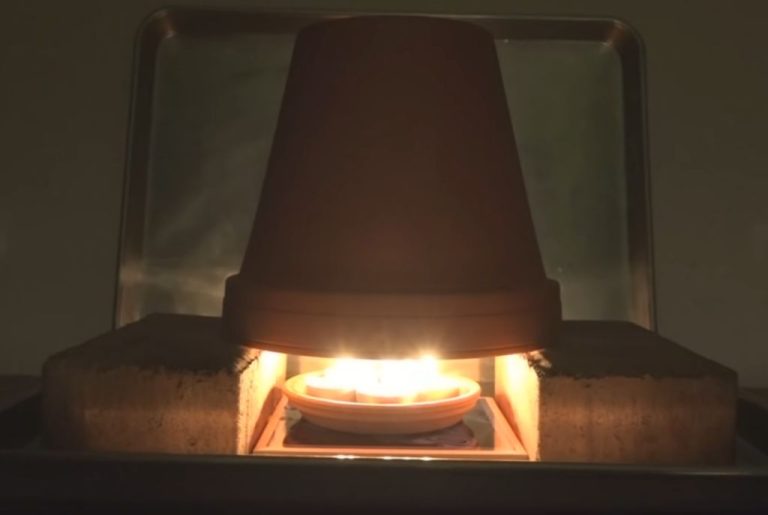What Does It Mean When Your Candle Won’T Stay Lit?
Candles unexpectedly going out before fully melting down into a pool of wax is a common problem many candle users face. There are a variety of reasons this can happen, most of which are easy fixes. The main culprits tend to be issues with the wick, wax, placement, airflow, or general maintenance. With some troubleshooting, you can get your candle to burn evenly and fully every time.
Wick Issues
One of the most common reasons for candles going out prematurely is issues with the wick. Here are some potential wick-related causes:
Wicks that are too short – The wick needs to be long enough for the flame to properly draw up wax through capillary action. If the wick is trimmed too short, the flame will be suffocated and go out.
Wicks trimmed incorrectly – Wicks should be trimmed to 1⁄4 inch before lighting. Trimming too low or leaving a ragged edge can disrupt capillary action.
Wicks not centered – If the wick is off-center in the wax pool, the flame will not get enough fuel and the candle will struggle to stay lit.
Checking wick length and position is one of the first troubleshooting steps when a candle is going out prematurely. Trim the wick to the proper height and make sure it is centered in the melted wax pool for optimal performance.
Wax Issues
The quality and composition of the wax can impact a candle’s ability to stay lit. Here are some common wax-related reasons a candle may struggle:
Wet Spots
Wet spots or oil pools on the wax surface can cause the wick to drown and the flame to go out. This happens if the fragrance oil doesn’t fully incorporate with the wax. Try letting the candle cure longer before lighting.
Poor Quality Wax
Low quality waxes like paraffin are more prone to issues like sooting, tunneling, and poor scent throw. Upgrading to a higher quality wax like soy or beeswax can improve performance.
Wrong Melting Point
If the wax’s melting point is too low or too high for the environment, it can impact burn time and how well the wax pools. Make sure to match the wax to the proper temperature range.
Location Issues
Where you place your candle can affect whether it stays lit or not. Issues with the location are one of the most common reasons candles have trouble staying lit.
Drafts and airflow in the room can blow out candle flames. Try to avoid placing candles near open windows, doors, or fans where drafts frequently occur. Even people walking by can create enough airflow to disturb a candle flame.
Areas that are too cold can also make it difficult for candles to stay lit. The wax can harden in cold temperatures, making it more difficult for the wick to draw up wax into the flame. Place candles away from drafty or cold spots in a room.
Make sure there is adequate ventilation wherever you put candles. Enclosed spaces or areas where air cannot circulate well are problematic. The flame needs oxygen, and if air cannot flow properly, the candle may struggle to stay lit.
Avoid placing candles too close together as they can warm the surrounding air and melt wax too quickly. Leave several inches between candle holders for best results.
In general, locate candles away from problem spots with drafts, poor ventilation, or temperature extremes. Pay attention to airflow and spacing when positioning your candles.
Container Issues
The container that holds the candle wax plays an important role in keeping the flame lit. Some common container issues that can cause a candle to go out include:
- The container is too large – If the container is very wide or tall compared to the candle, too much airflow can get in and blow out the flame.
- The container is too small – If the container fits the candle too snugly and doesn’t allow oxygen to get to the flame, it may extinguish the flame.
- Poor conductivity – Certain materials like glass, ceramic or plastic don’t absorb and distribute heat as well. This can lead to an uneven melt pool and extinguishing the flame.
- Thin container walls – Thin glass or metal containers don’t retain heat as well, causing wax to harden and extinguish the flame.
- Drafts – Breezes or drafts can more easily blow out the flame in containers with wide openings.
Choosing a container that fits the candle properly, made of a heat-conductive material, and protects from drafts can help sustain a strong flame.
Fuel Issues
The type of wax and other fuel used in a candle can significantly impact its ability to stay lit. Here are some potential fuel-related issues:
Problematic Wax Blends
Many candles today are made from a blend of paraffin wax and other ingredients to make the wax easier to work with and give certain properties. However, some wax blends are more prone to issues like sooting, tunneling, and struggles staying lit. Cheaper candles often use more paraffin, which can cause more sooting. Beeswax and soy wax blends tend to burn cleaner.
Oil Additives
Some candle makers add oils to the wax to make it more pliable or aromatic. But too much oil can prevent the wax from hardening properly and the oils may sweat out when burning, making it hard for the wick to light. Oils like coconut, olive, and palm oils can lead to issued if overused in the wax blend.
Problematic Wick Materials
Candle wicks are sometimes treated with additives to help stiffen them or make them burn slower. Some additives like borax can clog wicks and prevent them from lighting properly. It’s best to use untreated, natural fiber wicks to avoid issues.
Airflow Issues
Proper airflow is critical for a candle to burn correctly. Too much or too little airflow can cause issues like:
- Flame burning too high or too fast – Too much airflow feeds the flame with excess oxygen, causing it to burn hotter and faster than intended. This can cause the candle wax to liquefy too quickly and the wick to burn up faster.
- Sooting or smoking – Insufficient airflow leads to incomplete combustion, resulting in more unburnt carbon molecules that cause smokey soot to build up on the candle and container.
- Tunnelling – Uneven airflow can create turbulence that burns a hole down the center of the candle wax, leaving wax around the sides.
- Flame sputtering – Erratic airflow causes the flame to sputter, flicker, and struggle to stay lit. This instability indicates improper airflow.
Check that nothing is blocking airflow around the candle, such as decorations, other candles, or objects placed too closely nearby. Trim the wick so it is not excessively long. Avoid drafts or fans blowing directly on the candle. Use a properly sized candle for the space and container. This allows for the ideal airflow to sustain an even, steady flame.
Flame Issues
The flame itself can cause issues with keeping a candle lit. Buildup of soot, debris, and dust on the wick over time is one culprit. As these particles accumulate on the wick, they interrupt the capillary action that draws wax up to fuel the flame. This disruption means the wick cannot deliver enough wax to sustain combustion.
Another flame-related problem is wick length. If the wick becomes too long due to burning, it can start to bend over into the melted wax pool. This causes the tip of the wick to become soaked with liquid wax rather than drawing up just enough fuel to burn. The soaked wick has trouble staying lit. Trimming the wick can help resolve this.
Excessive drafts or wind can also trouble the flame. Air currents that are too strong may blow out the flame or prevent it from burning upright. This starves the wick of oxygen and wax, causing the candle to go out. Shielding the candle from drafts or moving it to a less windy spot can help prevent this.
Maintenance
Proper candle maintenance can help prevent issues with your candle not staying lit. Here are some tips for keeping your candles in optimal condition:
Trim the wicks: Always trim candle wicks to 1⁄4 inch before lighting to avoid excessively large flames. Use wick trimmers specifically designed for candles.
Allow the wax to fully pool: Let candles burn long enough each time to form a full pool of liquid wax. This helps prevent tunneling, which is when wax melts unevenly around the edges. A full pool should go edge to edge.
Use a candle warmer occasionally: Placing an unlit candle on a warmer helps melt and even out the wax, which can correct issues like sinkholes or uneven burning.
Avoid drafts: Position candles away from vents, windows, doors, or ceiling fans that can cause the flame to flicker and tunnel the wax.
Trim off sooty wax and replace large wax mounds: Built up soot and large melted wax deposits indicate improper burning. Trim these away and replace candles once large wax mounds form.
Dust candle holders: Dust can clog candle wicks and cause poor wax pooling. Gently dust holders to keep wicks clean.
With proper maintenance like wick trimming and allowing full wax pooling, you can help ensure your candles burn correctly and the flames stay lit.
When to Get Help
There are some situations when it’s best to consult a professional candle maker or seller for assistance with your candle issues.
If you’ve tried troubleshooting on your own by trimming the wick, adjusting wax levels, moving the candle’s location, etc. and the candle still won’t stay lit, it’s time to seek expert help. Persistent lighting problems that you can’t resolve likely indicate a deeper issue with the candle’s construction or materials.
Additionally, seek assistance if the candle becomes a safety hazard. Signs of this include the candle container cracking from overheating, black smoke plumes, or the wax catching fire. These situations can quickly become dangerous and require professional intervention.
In many cases, a candle with persistent issues may need to be fully replaced. A candle maker can inspect the candle and provide advice on whether fixing or replacing it is the best option. For a high-quality candle, replacement may be offered under the maker’s warranty.
When seeking help, first contact the maker or seller of the candle if possible. Big box stores likely won’t have specialized expertise, so local candle shops and artisan candle makers are better resources. Describe the issues you’re experiencing so they can troubleshoot and propose solutions.
With guidance from a professional, a frustrating candle problem can usually be remedied. Don’t continue struggling with a defective candle that threatens to waste wax and wicks. Seek expert help to get your candle lighting reliably again.



